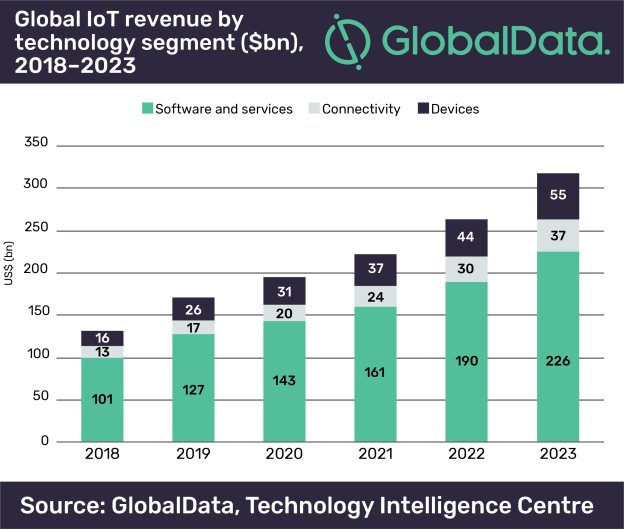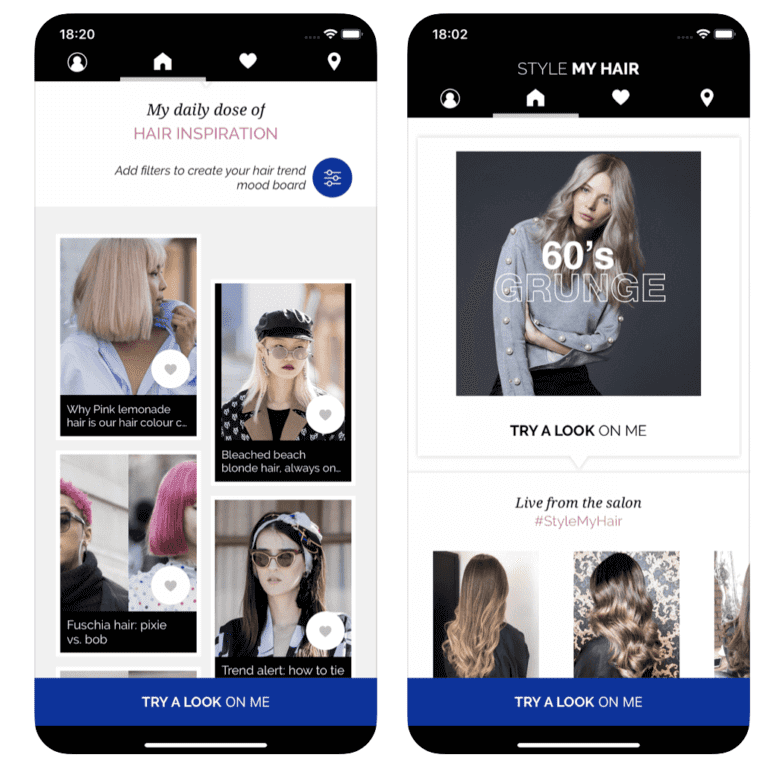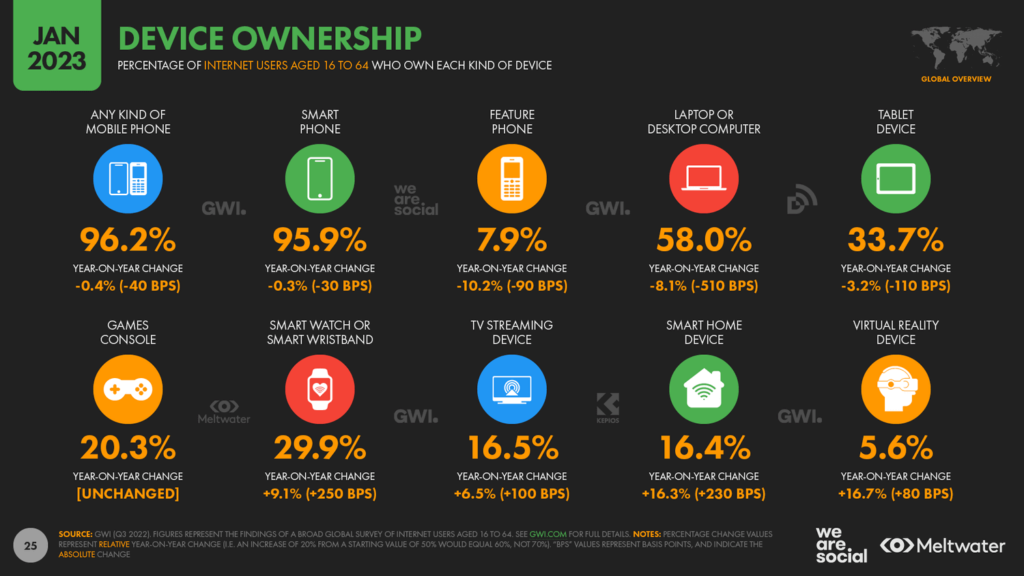As mobile devices have become an integral part of our daily lives, businesses are capitalizing on this trend by developing innovative and engaging mobile apps for their customers. After the COVID-19 pandemic, mobile apps have gained even more importance, becoming our go-to solution for everything from grocery shopping and attending classes to entertainment and virtual appointments.
According to Statista, by 2026, the total revenue of mobile apps worldwide will reach $689 billion, which includes advertising revenue, in-app purchases, and paid apps.
As 2023 unfolds, new and groundbreaking trends are emerging that are set to redefine the mobile app development landscape, and to stay ahead of the curve, you need to be well-versed in the top trends. To help you stay on top, in this article, we will cover the top 10 mobile app development trends to watch in 2023 and provide insight into how these trends can help you stay at the forefront of innovation and stay relevant.
So, keep reading as we explore these exciting developments and their potential impact on the future of mobile app development.
Trend #1: Use of Artificial Intelligence (AI)
AI (Artificial Intelligence) and machine learning have been making their mark on mobile app development for some time now. However, we’re still in the early stages of discovering the full potential of these advanced technologies in enhancing the app development process.
While virtual assistants like Siri and Alexa are the most common examples of AI, the scope of AI in mobile app development extends far beyond that. With the introduction of platforms like Apple’s Core ML 3, developers now have the tools to incorporate AI technology seamlessly into their apps.
Furthermore, mobile app developers now leverage ChatGPT APIs to make their applications more intelligent and advanced. By integrating AI-driven conversation models, apps can provide more natural and engaging interactions, deliver personalized content, and assist with customer support or other services, ultimately enhancing the overall user experience.
Here are some examples of AI features you can add to mobile apps:
- Speech recognition
- Image recognition
- Predictive maintenance
- Face detection
- Text and image classification
- Sentiment detection and classification
Integrating AI in mobile app development can significantly improve their performance at every level, from the backend development process to the frontend user experience. As we move through 2023, AI will continue to revolutionize the way apps we create apps.
Trend #2: Internet of Things (IoT) Integration
The Internet of Things (IoT) has been a familiar concept for years, but with the increasing mobile penetration across various sectors, the potential for IoT integration has skyrocketed. Many people today rely on technology to enhance their daily lives, and IoT, through its network of interconnected devices, is at the forefront of this transformation.
Smart home technology is a prime example of how IoT and mobile app development converge. Mobile apps enable users to remotely control their thermostats, lock or unlock doors, and connect to home security systems. Even household appliances like refrigerators can now connect to mobile apps for easier management.
The global IoT market is projected to reach $318 billion in 2023. As the number of IoT devices continues to grow, Statista predicts that the revenue from IoT-related technology will surpass $1.6 trillion by 2025.

There will be a greater focus on IoT integration in mobile apps in 2023. The key markets to watch are household devices, automobiles, display devices, smart devices, and healthcare since they all benefit from the seamless connection and control offered by IoT-enabled mobile apps.
Trend #3: Cross-Platform App Development
The idea of “Write Once, Run Anywhere” has always inspired developers, leading them to explore various tools and techniques for cross-platform mobile app development. Native apps, although powerful, are resource-intensive, necessitating separate development and support teams and distinct codebases for different platforms.
To reduce costs and labor, developers introduced hybrid apps, which combine web apps with responsive design and embedded browser control. However, this approach had a major drawback: compromised user experience (UX), and the debate between web, native, and hybrid apps remained unresolved.
The shortcomings of hybrid apps eventually led to the rise of cross-platform development, mainly through mobile app development frameworks like Flutter. Renowned apps like Alibaba and Google Ads, built using Flutter, boast excellent user interfaces and extensive features.
Cross-platform mobile apps offer several advantages, such as:
- Access to a broader target audience.
- Easy maintenance and updates for the application.
- Lower upfront costs mean lower risk for investors and developers.
- A single support team can provide support for apps running on multiple platforms.
- Consistent user interface and user experience across different devices and platforms.
As 2023 unfolds, the trend of cross-platform app development will likely gain more traction, providing developers and businesses with a cost-effective and efficient solution for creating apps that cater to a broader audience.
Trend #4: Augmented Reality
Augmented Reality (AR) has gained significant traction recently and will likely continue its upward trajectory in 2023. Mobile apps can harness AR features for a diverse range of applications.
In mobile gaming, Pokemon Go set the stage for AR, but today, AR has become practical for various other apps as well. L’Oreal Paris, for instance, leverages AR in their Style My Hair app, allowing users to try out different hairstyles and colors virtually. They’ve also integrated a Virtual Makeup Try-On feature that uses AR to preview real-time makeup looks on users’ faces.

Google Maps introduced “Live View,” a feature that provides turn-by-turn directions in real-time using real-world imagery. The app can pinpoint a user’s location by pointing the device’s camera at buildings and street signs.
While these examples may only apply to some apps developed in 2023, there are numerous other ways to incorporate AR into mobile apps. Workforce apps, for example, can utilize AR-based training programs for employee learning.
Trend #5: Blockchain Technology
Blockchain, often considered a digital ledger for cryptocurrency transactions, provides unparalleled transparency and security. It plays a crucial role in securing electronic transactions made through mobile apps. In the wake of COVID-19, digital payments and mobile wallets have seen a significant surge in usage, making integrating blockchain technology into mobile apps to maximize their functionality even more crucial.
However, it’s essential to carefully consider the business requirements of your application before implementing blockchain in mobile app development, as the technology still needs to prove its usefulness, and every blockchain solution (Layer 1 Blockchain) has certain limitations and use cases.
There are several reasons why mobile developers are excited about blockchain:
- Enhanced Data Security: Private decryption keys assigned to users ensure that data remains secure and protected from unauthorized access.
- Transaction Transparency: Each transaction block carries a timestamp and data from the previous block, offering stakeholders a clear view of the transaction history.
- Reliable Contactless Mobile Payments: Blockchain facilitates secure and trustworthy contactless payment methods, which have become increasingly important today.
Incorporating blockchain technology into mobile app development is a trend poised to gain momentum in 2023, offering developers and users enhanced security, transparency, and reliability.
Trend #6: Mobile Payments
Mobile payments are transforming how people conduct transactions, and this shift is significantly impacting mobile app development in 2023.
Mobile wallets like Apple Pay, Google Pay, and Samsung Pay are gaining popularity, and their usage is expected to continue growing in the coming years.
According to Payment Cards & Mobile, mobile wallet transactions are projected to reach $13.98 billion by the end of 2023. In other words, the mobile wallet market will more than double compared to the last two years. Thus, mobile app developers must increasingly consider incorporating mobile wallet integration as a standard feature for any app that processes transactions.
While mobile wallet penetration in apps is not yet universal, it is expected to grow significantly in the years to come. To stay ahead of the curve, mobile app developers should prioritize mobile wallet integration in their designs, ensuring a seamless and secure user experience for mobile payments.
Trend #7: Instant Apps
In the mobile app development landscape, instant apps are rapidly gaining traction, offering users a unique experience that combines the benefits of native apps and the convenience of web apps.
Like taking a test drive before buying a car, instant apps allow users to try out basic functionalities without downloading the app or sharing personal information. This innovative approach saves storage space on users’ devices and ensures a seamless and uninterrupted experience.

For custom app developers, Google Instant apps present several advantages, including:
- Simplified Development: Instant apps streamline the development process, allowing developers to focus on core features and functionalities.
- Resource Efficiency: With fewer resources for building instant apps, developers can allocate their time and budget more effectively.
- Ideal for eCommerce and Gaming Apps: Instant apps are particularly well-suited for eCommerce and gaming apps, which can leverage this technology for marketing purposes, attracting new users with their engaging, easy-to-try features.
Thus in 2023, developers should consider adopting this approach to stay competitive and meet the evolving expectations of users and beyond.
Trend #8: Mobile Learning / eLearning
During the past few years, mobile learning has gained momentum, revolutionizing people’s way of accessing and engaging with educational content.
According to Statista, 35% of employees use their phones for educational purposes. By the end of 2025, mobile learning is expected to grow to $58.50 billion, with a CAGR (Compounding Annual Growth Rate) of 21.45% from 2020 to 2025. This impressive growth highlights the potential of mobile learning as a significant trend in mobile app development.
There are several reasons for the rising popularity of mobile learning. Firstly, it offers unparalleled accessibility, enabling learners to access educational content from any location and anytime. This flexibility empowers learners and fosters a more interactive and engaging learning experience. Features like continuous feedback and 360-degree learning make mobile learning more enjoyable and effective.
Similarly, corporations, too, are increasingly embracing mobile learning, as it results in higher course completion rates, accelerated learning, increased engagement, and improved knowledge retention. Consequently, the demand for mobile learning apps continues to grow.
So, if you have an innovative idea or wish to launch a mobile learning solution for employee training, now is the perfect time to collaborate with a team specializing in education app development. You should embrace and utilize this mobile learning trend for a successful future in mobile app development.
Trend #9: Wearable Tech integration
Wearable devices have been steadily growing in popularity, transforming how people interact with technology. Statista reports that the number of connected wearable devices soared from 453 million in 2017 to 929 million in 2022, highlighting the rapid adoption of this innovative technology.
Also, the research from GWI indicates that approximately 1 in 5 adult internet users now have a wearable device that tracks fitness, such as a smartwatch or any sort of wrist fitness tracker.

Recent advancements in the wearable tech industry include Apple Watch Series 8, which introduced new features, watch faces, enhanced wallet access, and a redesigned interface for Apple Watch users. Additionally, Google and Samsung collaborated to create a unified wearables platform, combining Google’s Wear OS with Samsung’s Tizen software, resulting in a 30% improvement in app startup times.
These developments underscore the importance of wearable technology as a key mobile app development trend in 2023. App developers and businesses should prepare to create smartwatch apps that offer exceptional digital experiences for users on smartwatches and other wearable devices, gaining a competitive advantage over those who do not.
Trend #10: On-Demand Mobile Apps
On-demand mobile app development is experiencing significant growth in 2023, with apps like Airbnb and Uber showcasing immense potential in this sector. Harvard Business Review Reports indicate that on-demand services account for $57.6 billion in annual spending, highlighting these apps’ transformative impact across various industries.
Here are some examples of areas where on-demand apps are making a difference:
- Pet care
- House cleaning
- Food delivery
- On-demand doctors
- Maintenance services
- Laundry services
- Barber and beauty salons
- Fitness services
- Virtual tutors & coaches, etc.
The possibilities for on-demand apps seem limitless, offering a fantastic opportunity for mobile app developers and resellers to expand their customer base.
By integrating on-demand features into their offerings, developers can enable clients to add advanced functionality to their apps, ultimately driving increased profits for all parties involved. As the on-demand economy continues to flourish, app developers who embrace this trend will be well-positioned to capitalize on its vast opportunities.
Create Your Business Mobile App in No Time with APPExperts
The Easiest Way to Stay Ahead of The Curve in 2023
Do you need help creating a mobile app for your business due to a lack of coding skills or budget constraints? In the fast-paced digital market of 2023, you are missing out on potential customers and falling behind competitors if you need an app.
But worry not! You can elevate your business in minutes by creating a powerful mobile app using APPExperts. This no-code platform empowers you to develop custom Android and iOS apps in minutes with a user-friendly interface and customizable designs.
So, unleash your business’s potential with a seamless mobile app that stays ahead of the competition, and don’t wait to transform your ideas into reality with APPExperts today!
Wrapping Up
In mobile app development, relying on outdated information from two or three years ago will leave you struggling to stay competitive — which is why keeping up with the latest industry trends is crucial for the success of your projects.
As an individual business owner or a mobile app development company, embracing the latest mobile app development trends in 2023 will give you a competitive edge. While it’s optional to implement every trend in each app you create, having a comprehensive understanding of market shifts allows you to adapt accordingly.
Lastly, for those who don’t want to deal with the complex app development process, consider using APPExperts. This WordPress plugin enables you to effortlessly convert your WordPress websites into Android and iOS apps using a simple drag-and-drop approach with zero coding.
